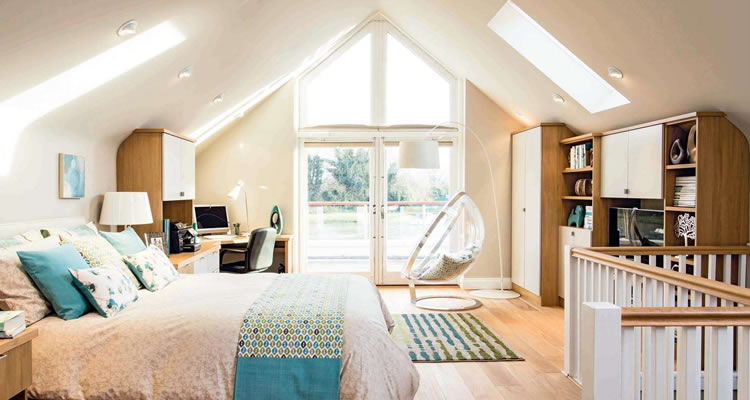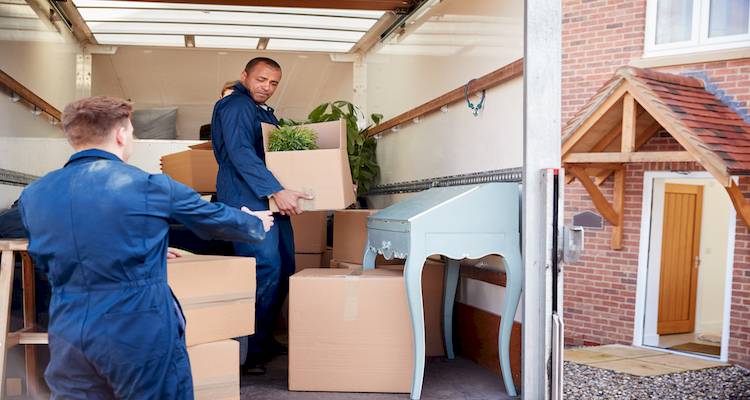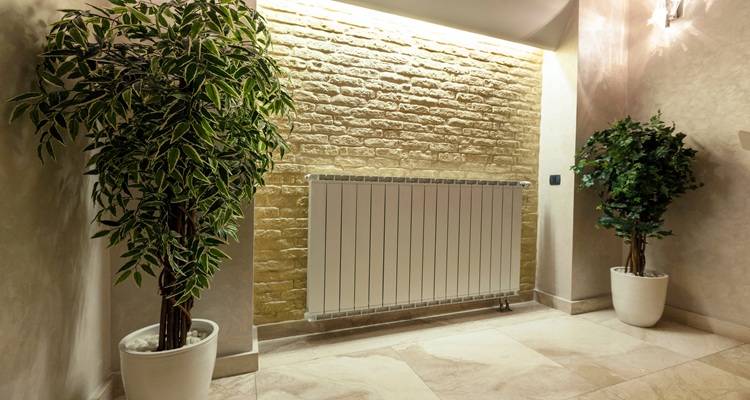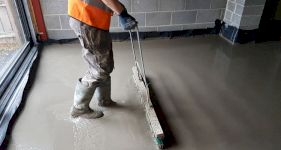Loft Extension Cost
- The average cost of extending a loft is around £40,000
- The job will take approximately 4 to 10 weeks to complete
- A complete pricing breakdown which includes things you need to consider, along with what such a task usually involves
- How long the job should approximately take and a general overview of what types of services can be performed
- How to find and hire a builder

£40,000
Table of Contents
How Much is a Loft Extension?
With the average price of a loft extension costing around £40,000 it often works out cheaper for homeowners to expand their existing home rather than move. So, if you have an unused loft area, it's worth thinking about utilising it to create additional living space such as an extra bedroom or home office.
The most suitable type of loft conversion or extension can depend on the type of roof involved and how you intend to use the space. In some cases, it is possible to remove the entire loft and have it completely rebuilt, although this can become far more expensive and time-consuming.
Internal loft conversions, such as velux designs tend to cause minimal disruption, as they involve minimal structural work. Whereas dormers are the most popular loft extension in the UK as they offer additional space by increasing the headroom and making good use of the space available.
Once you have made the decision on a loft extension, then one of the most important decisions you have is deciding which company you are going to entrust with the project.
This can be a nightmare scenario with not only health and safety issues to consider, but also the not inconsiderable financial outlay involved. Not only do you have to avoid the cowboys and scam artists that will be happy to take your money and run, but you also want to find a company that does a great job.
You can use the free service on this website to find a reputable loft conversion or building company by simply completing the short online form then having local tradesman and specialist companies get in touch with you with a view to providing written quotes for your project.
I have a small dormer extension on the roof of my terraced house and would like to extend it so it is flush with the front of the house. Might this be possible? And what would be the average cost?
Loft Extension Prices
The average cost of a loft extension in the UK is approximately £40,000 but can vary depending on the type of loft conversion you're going for, along with other factors such as the room size and materials you're using. As well as other cost factors, such as if you're having all the work carried out on site, or installing a modular unit whereby the majority of the loft extension is built elsewhere and delivered as a finished unit.
Within the below table, we take a look at the cost of a standard loft extension (including materials and labour fees), comparing the four main styles available.
If you are having a more complex extension built, for example a bedroom with the addition of an en-suite bathroom, costs are likely to be at the higher end of the scale. These builds will also require a wider range of tradesmen and potentially take longer to complete.
| Type of Extension | Average cost |
|---|---|
| Velux Loft Extension | £15,000-£30,000 |
| Dormer Loft Extension | £30,000-£60,000 |
| Hip-to-Gable Loft Extension | £40,000-£65,000 |
| Mansard Loft Extension | £45,000-£75,000 |
Labour Costs and Timeframes
With a number of tradesmen involved in the project, labour fees (including planning and project management) will usually account for around 50% to 60% of your overall cost. As for the duration, the work can range from 4 to 10 weeks to complete - depending on the size and complexity of the build.
Timeframes may also vary depending on factors such as weather conditions or in the event of any unplanned structural repairs. Labour costs are also often higher in London and the South East, which may impact your overall budget.
With this in mind, the below provides a rough guide:
| Type of Extension | Duration | Average cost |
|---|---|---|
| Velux Loft Extension | 4-6 weeks | £9,000-£14,000 |
| Dormer Loft Extension | 6-8 weeks | £20,000-£40,000 |
| Hip-to-Gable Loft Extension | 6-8 weeks | £20,000-£35,000 |
| Mansard Loft Extension | 8-10 weeks | £25,000-£45,000 |
Things to Consider Before Converting or Extending your Loft
Unfortunately, not all lofts are actually suitable for a loft conversion or extension.
Before you start planning your loft project, you need to check that the roof structure is suitable and that there is enough height within your loft to provide adequate headroom.
You also need to think twice if there is a chimney in the way of your proposed conversion, as the cost of moving a chimney can be considerable.
If the existing head-space is insufficient then there are types of loft conversions and extensions which can still work but they are much more expensive as they generally involve removing the old loft and fitting a new one with more headroom.
Mansard loft conversions involve one or both slopes of the roof being replaced with a new structure with steep sides and an almost flat roof is placed over the top creating sufficient volume for an additional storey.
Another option when headroom is limited is fitting a pre-fabricated loft, replacing the existing roof structure with a larger one that is craned into place and can extend out over an existing extension. Both these types of loft conversions will normally require planning permission.
In some circumstances, albeit less common, it can be possible to purchase a pre-fabricated loft extension. This process involves the main construction being completed away from the property, and then having it delivered on the back of a truck before being placed into position via a crane.
Doing it Yourself
As long as you have a standard roof structure and there aren’t any restrictive planning constraints, a loft conversion or extension can be one of the most straightforward ways to create extra space.
A simple internal loft conversion without a dormer or any windows may be suitable for a DIY enthusiast, but it still requires a considerable amount of knowledge and experience. While there can be a possibility of doing it yourself, it's highly recommended to seek advice from a professional. As for more complex loft extensions, DIY is generally not the best option.
Assuming you have in place all the relevant permissions and paperwork required, the first step is fitting the flooring. If you already have good wooden floor beams, then this step is really easy as all you really need to do is fill the gaps between the beams with insulation, then lay floorboards on top across the beams.
Next, come the stud walls which are then covered in plasterboard and tacked in place using nails or screws. This is a bit more difficult, especially where your loft walls are angled. Once the plasterboard is tacked in place, you should probably hire a plasterer at this stage to get a professional finish.
To convert your loft into a living space, such as a spare bedroom, is a bit more difficult. You will probably need a structural engineer or architect to check that the added load of an additional room will be supported, plus you will need to submit plans to building control to ensure you meet Building Regulations.
Windows or roof-lights will also be required, typically just roof-lights to the front and back, but windows can be added to the gable walls. Note that fire escape windows will be required with an opening large enough to meet the Building Regulations.
Converting your loft into a living area will also require a proper staircase to meet regulations. The design and position of this staircase are the key decisions in any loft conversion and the stairs must land where there is at least 1.9m of headroom with a maximum staircase pitch of 42 degrees and a useful minimum width of at least 600mm.
Spiral staircases are popular in many loft conversions as they are a space-efficient option. Extending the loft space is an even bigger job, if considering this it would be wise to consult an architect or professional construction company.
Loft Extension Checklist
- Loft conversion companies can work around water tanks and chimneys in the loft space but try and plan around them if possible.
- If the loft extension is to be used as an additional bedroom(s) consider adding a bathroom as part of the loft conversion.
- When planning be careful that the loft extension does not compromise space on the second floor just to accommodate the staircase access.
- Consider that your boiler may not be able to cope with the extra pressure required to feed hot and cold water up to another floor.
FAQs
Does my loft have enough height for headroom to be converted or extended?
Do I need Planning Permission for my loft conversion or extension?
In any case permitted development is subject certain conditions so always get in touch with your local Planning Office before starting any work.
Where will the new stairs go?
Therefore you have to consider the space required for loft stairs when designing a conversion and in some cases, it may be necessary to make another room slightly smaller to achieve a loft conversion with a staircase that complies with building regulations.









